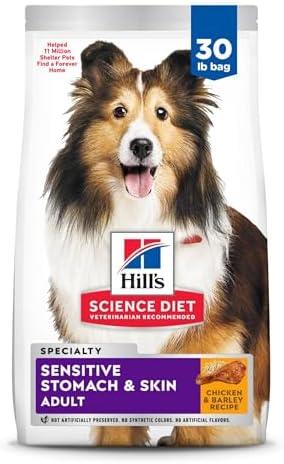Once, a golden retriever named Max loved to roll in the grass, chase squirrels, and splash in puddles. His owner, Sarah, adored him but struggled with the question: how often should she bathe him? After some research, she learned that bathing Max every 4-6 weeks was ideal. This kept his coat healthy and reduced skin issues while still allowing him to enjoy his adventures. By finding the right balance, Sarah ensured Max stayed clean and happy. Remember, a well-groomed dog is a happy dog—so find the bathing routine that works best for your furry friend!
Contents
- Understanding Your Dogs Coat Type and Its Bathing Needs
- The Impact of Lifestyle and Environment on Bathing Frequency
- Recognizing Signs That Indicate Your Dog Needs a Bath
- Best Practices for Bathing Your Dog to Ensure Health and Comfort
- Q&A
Understanding Your Dogs Coat Type and Its Bathing Needs
When it comes to maintaining your dog’s hygiene, understanding their coat type is crucial. Different breeds have varying coat textures, lengths, and densities, which directly influence their bathing needs. For instance, dogs with **short, smooth coats** like Beagles or Boxers typically require less frequent baths, often every 2-3 months, unless they get particularly dirty. Their coats naturally repel dirt and debris, making them relatively low-maintenance in terms of bathing.
On the other hand, **long-haired breeds** such as Golden Retrievers or Afghan Hounds may need more regular grooming and bathing. These dogs can accumulate dirt, tangles, and odors more quickly, necessitating baths every 4-6 weeks. Regular bathing not only keeps their coats clean but also helps prevent matting and skin issues, ensuring they remain comfortable and healthy. Additionally, using the right shampoo designed for their coat type can enhance their coat’s natural shine and texture.
For dogs with **curly or wiry coats**, like Poodles or Terriers, the bathing frequency can vary based on their activity level and environment. These breeds often benefit from baths every 3-4 weeks to maintain their coat’s structure and cleanliness. Regular grooming sessions are also essential for these dogs, as they help remove loose hair and prevent matting, which can lead to skin irritations if left unchecked.
Lastly, **short-haired breeds** that are more prone to skin conditions, such as Bulldogs or Dalmatians, may require more frequent baths to manage oil buildup and odor. Bathing them every 2-4 weeks can help keep their skin healthy and free from irritants. Always remember to consult with your veterinarian or a professional groomer to tailor a bathing schedule that best suits your dog’s specific coat type and lifestyle, ensuring they remain clean, comfortable, and happy.
The Impact of Lifestyle and Environment on Bathing Frequency
When considering how often to bathe your dog, it’s essential to recognize the significant role that lifestyle and environment play in determining bathing frequency. Dogs that lead an active lifestyle, such as those who frequently accompany their owners on outdoor adventures, may require more frequent baths. **Mud, dirt, and debris** can accumulate on their coats, leading to unpleasant odors and skin irritations if not addressed promptly. In contrast, dogs that enjoy a more sedentary lifestyle may not need as many baths, as they are less likely to encounter the same level of grime.
The environment in which a dog lives also greatly influences bathing needs. For instance, dogs residing in urban areas may be exposed to pollutants and allergens that can irritate their skin and coat. **Regular baths** can help remove these irritants, promoting healthier skin and a shinier coat. Conversely, dogs living in rural or less polluted areas might not require as frequent bathing, as they are less exposed to environmental stressors. Understanding your dog’s surroundings can help you tailor a bathing schedule that keeps them comfortable and clean.
Additionally, certain breeds have specific grooming needs that can affect how often they should be bathed. **Long-haired breeds** or those with thick undercoats may trap dirt and debris more easily, necessitating more frequent baths to prevent matting and skin issues. On the other hand, short-haired breeds might require less frequent bathing, as their coats are less prone to trapping dirt. It’s crucial to consider your dog’s breed characteristics when determining the optimal bathing frequency.
Lastly, individual factors such as age, health, and skin conditions can also dictate how often a dog should be bathed. Puppies and older dogs may have more sensitive skin and require gentler care, which can influence bathing frequency. **Consulting with a veterinarian** can provide valuable insights tailored to your dog’s specific needs, ensuring that you maintain their hygiene without compromising their skin health. By taking into account these lifestyle and environmental factors, you can establish a bathing routine that keeps your dog looking and feeling their best.
Recognizing Signs That Indicate Your Dog Needs a Bath
As a responsible dog owner, it’s essential to stay attuned to your furry friend’s needs, especially when it comes to hygiene. There are several telltale signs that indicate your dog may be overdue for a bath. One of the most obvious signs is a noticeable odor. If your dog starts to smell less like a beloved pet and more like a wet sock, it’s time to consider a wash. Dogs can accumulate dirt, oils, and bacteria on their skin, leading to unpleasant smells that can linger in your home.
Another indicator is the condition of your dog’s coat. If you notice that their fur is looking dull, greasy, or matted, it’s a clear sign that a bath is in order. Regular bathing helps to remove dirt and debris, promoting a healthier and shinier coat. Additionally, if your dog is scratching more than usual or showing signs of skin irritation, it may be due to the buildup of allergens or irritants that can be washed away with a good bath.
Pay attention to your dog’s behavior as well. If they seem restless or uncomfortable, it could be a sign that they are feeling dirty or itchy. Dogs often express their discomfort in various ways, such as rolling on the floor or rubbing against furniture. These behaviors can indicate that they need a good scrub to alleviate their discomfort and restore their sense of well-being.
Lastly, consider the environment your dog has been in. If they’ve spent a day playing in the mud, swimming in a lake, or rolling around in grass, they are likely to need a bath sooner rather than later. Regularly assessing your dog’s activities can help you determine the right time for a bath. By being proactive and recognizing these signs, you can ensure your dog remains clean, comfortable, and happy.
Best Practices for Bathing Your Dog to Ensure Health and Comfort
Bathing your dog is not just about keeping them looking good; it plays a crucial role in their overall health and comfort. Regular baths help to remove dirt, allergens, and excess oils from your dog’s coat, which can prevent skin irritations and infections. However, the frequency of baths can vary based on several factors, including your dog’s breed, coat type, and lifestyle. Understanding these factors will help you establish a bathing routine that promotes your dog’s well-being.
For dogs with long or thick fur, such as Golden Retrievers or Siberian Huskies, more frequent grooming may be necessary to prevent matting and tangles. These breeds may benefit from a bath every 4 to 6 weeks, especially if they spend a lot of time outdoors. On the other hand, short-haired breeds like Beagles or Boxers may only need a bath every 2 to 3 months, as their coats are less prone to trapping dirt and debris.
Additionally, consider your dog’s activity level and environment. If your furry friend enjoys outdoor adventures, they may require more frequent baths to keep their coat clean and free from pests. Dogs that have skin conditions or allergies may also need specialized bathing routines with medicated shampoos, which should be discussed with your veterinarian. Always pay attention to your dog’s unique needs and adjust their bathing schedule accordingly.
When bathing your dog, it’s essential to use high-quality, pet-safe shampoos that are suitable for their specific coat type and skin sensitivity. Avoid human shampoos, as they can disrupt the natural pH balance of your dog’s skin. Make bath time a positive experience by using warm water, ensuring a comfortable environment, and rewarding your dog with treats and praise. This approach not only keeps your dog clean but also strengthens your bond and makes future baths easier.
Q&A
-
How often should I bathe my dog?
The frequency of bathing your dog depends on several factors, including their breed, coat type, and lifestyle. Generally, most dogs benefit from a bath every 4 to 6 weeks. However, dogs that spend more time outdoors or have skin conditions may require more frequent baths.
-
Can I bathe my dog too often?
Yes, bathing your dog too often can strip their coat of natural oils, leading to dry skin and irritation. It’s essential to find a balance that keeps your dog clean without compromising their skin health.
-
What signs indicate my dog needs a bath?
Look for signs such as a noticeable odor, excessive dirt or mud on their coat, or oily skin. If your dog is scratching more than usual or has visible dirt, it’s time for a bath.
-
Should I use special dog shampoo?
Absolutely! Always use a shampoo specifically formulated for dogs. Human shampoos can be too harsh and may cause skin irritation. A quality dog shampoo will help maintain their coat and skin health.
maintaining your dog’s hygiene is essential for their health and happiness. By bathing them at the right frequency, you can ensure a clean, comfortable companion. Invest in their well-being—your furry friend deserves it!

大家好,我是彼得潘,專業的手法身體治療師。我喜歡探索和研究各種主題,並透過與人工智慧的合作分享專業、實用、有趣的文章。我們定期進行人工審核,以確保內容的準確性。如果您發現文章中有任何不準確的地方,請隨時與我們聯繫,我們會及時糾正。您可以透過 [email protected] 與我們聯繫。



